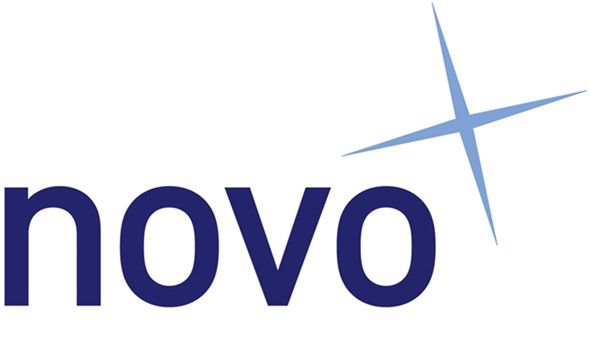What is Agile Leadership?

Agile leadership, a powerful and transformative approach to management, has been gaining traction in recent years. Having recently delved into this fascinating world myself, I’d like to share my insights and understanding of Agile leadership with you. In this article, we will first explore the principles of Agile leadership, then compare it to traditional leadership styles, and finally discuss the skills and best practices that can help you succeed as an Agile leader.
WHAT IS AGILE LEADERSHIP?
At its core, Agile leadership is a leadership style that embraces change, adaptability, and continuous improvement. Focused on empowering teams to self-organize and collaborate effectively, it emphasizes flexibility and rapid response to change. Originally stemming from the Agile software development methodology, Agile leadership has since expanded its reach to various industries and organizations, proving itself as a valuable approach in today’s fast-paced and ever-evolving business landscape.
Agile Leadership Principles
The principles of Agile leadership can be summarized as follows:
1. Embrace Change
Agile leaders are not afraid of change; on the contrary, they recognize it as a natural part of growth and innovation. Consequently, they encourage their teams to adapt and evolve, allowing them to respond quickly to new challenges and opportunities.
2. Empower Teams
By fostering an environment of trust and autonomy, Agile leaders enable teams to make decisions and take ownership of their work. This empowerment allows individuals to contribute their unique skills and perspectives, resulting in more innovative and effective solutions.
3. Focus On Outcomes
Agile leaders prioritize delivering value to customers and stakeholders, concentrating on delivering tangible results rather than adhering to rigid plans or processes.
4. Encourage Collaboration
Promoting open communication and collaboration, Agile leaders work towards breaking down silos and encouraging cross-functional teamwork.
5. Continuous Improvement
Believing in continuous learning and improvement, Agile leaders seek feedback for themselves and their teams, learn from failures, and strive to enhance their leadership skills and team performance.
Agile Leadership Training
Agile leadership training can help aspiring leaders develop the skills and mindset required to excel in this dynamic management style. Training programs often cover topics such as:
- Agile methodologies and frameworks, such as Scrum and Kanban
- Team dynamics and collaboration techniques
- Decision-making and problem-solving strategies
- Effective communication and feedback practices
- Adaptability and Resilience in the Face of Change
Real-life examples of Agile leadership training include the Certified Agile Leadership (CAL) program by the Scrum Alliance and the Agile Leadership Journey.
Agile Leadership Vs Traditional Leadership
Agile leadership differs from traditional leadership in several key ways:
1. Flexibility Vs Rigidity
While Agile leaders embrace change and adapt quickly, traditional leaders may be more resistant to change, preferring to stick to established plans and processes.
2. Empowerment Vs Control
Agile leaders empower their teams to make decisions and take ownership of their work, whereas traditional leaders may exert more control over their teams and micromanage tasks.
3. Outcomes Vs Processes
Agile leaders prioritize delivering value and outcomes, focusing on results rather than adherence to processes, while traditional leaders may emphasize processes and procedures over results.
4. Collaboration Vs Competition
Agile leaders encourage collaboration, while traditional leaders may foster a more competitive environment, with individuals or departments working in silos.
5. Continuous Improvement Vs Static Performance
Agile leaders believe in continuous learning and growth, while traditional leaders may be more focused on maintaining the status quo.
Agile Leadership Definition
In essence, Agile leadership can be defined as a management style that values adaptability, collaboration, empowerment, and continuous improvement. Agile leaders concentrate on delivering value to customers and stakeholders, encouraging their teams to self-organize and adapt to change while fostering a culture of trust and continuous learning.
Agile Leadership Skills
To succeed as an Agile leader, one must develop a set of essential skills:
1. Adaptability
Agile leaders must be comfortable with change and able to adjust their approach and strategies quickly in response to new challenges and opportunities.
2. Emotional Intelligence
Agile leaders need to be in tune with their own emotions and those of their team members, fostering an environment of trust, empathy, and understanding.
3. Effective Communication
Agile leaders must be skilled communicators, able to clearly articulate their vision, goals, and expectations, while also actively listening to feedback and concerns from team members.
4. Decision-Making
Agile leaders need to make informed, timely decisions that prioritize delivering value and focus on outcomes rather than rigid processes.
5. Coaching And Mentoring
Agile leaders should be able to guide and support their team members, helping them to grow and develop their skills and capabilities.
6. Conflict Resolution
Agile leaders must be adept at resolving conflicts, addressing issues, and finding common ground to promote collaboration and harmony within their teams.
7. Delegation And Empowerment
Agile leaders need to effectively delegate tasks and responsibilities, empowering their team members to take ownership of their work and make decisions.
Agile Leadership Best Practices
As an Agile leader, it is essential to implement strategies that enable your team to excel. This section will outline some best practices to consider, using formal headings and incorporating transition words for a smooth flow.
1. Creating A Safe Environment
Firstly, fostering a culture of psychological safety is crucial for Agile leadership success. Ensure that team members feel comfortable sharing ideas, expressing concerns, and taking risks without fear of retribution. This openness paves the way for innovation and collaboration.
2. Setting Clear Expectations
Secondly, clear communication of expectations and goals is vital. Make sure everyone on the team understands their roles and responsibilities, allowing them to work together effectively towards a shared vision.
3. Embracing Feedback
Thirdly, encouraging open and honest feedback from team members, both positive and constructive, can lead to growth and improvement. Embrace this feedback as an opportunity to learn and develop as a leader and to support your team’s development.
4. Fostering Collaboration
Next, breaking down silos and promoting cross-functional teamwork is essential. By encouraging collaboration and knowledge sharing across the organization, you can leverage the diverse skillsets and expertise of your team members to drive innovation and success.
5. Measuring And Evaluating Progress
Additionally, regularly assessing your team’s progress towards goals and objectives is necessary. Utilize metrics that focus on outcomes and value delivered to ensure your team remains on track and aligned with the overall mission.
6. Reflecting And Adapting
Furthermore, conducting regular retrospectives to review successes, challenges, and lessons learned is invaluable. Use this insight to continuously improve and adapt your approach, ensuring that your leadership style evolves alongside the needs of your team and organization.
7. Developing Your Own Agile Leadership Style
Lastly, remember that Agile leadership is not a one-size-fits-all approach. Develop your own unique style that aligns with your values, strengths, and the needs of your team. This personalization will enable you to connect more deeply with your team members and effectively guide them towards success.
A Powerful Approach
In conclusion, Agile leadership is a powerful approach that can help organizations adapt, innovate, and thrive in today’s rapidly changing business landscape. By embracing the principles of Agile leadership, developing key skills, and implementing the best practices outlined above, you can empower your team to deliver exceptional results and drive continuous growth and improvement. While embracing Agile leadership may be a journey of discovery, it is one that can lead to remarkable outcomes for both you and your organization.
Originally published on People Development Magazine, https://peopledevelopmentmagazine.com/2023/04/17/what-is-agile-leadership/












